The Tree of Life, a powerful and fascinating symbol that has captured the imaginations of cultures across the globe, holds a deep and profound meaning in mythology. From its origins in ancient Mesopotamia to its representations in Celtic culture and Chinese mythology, the Tree of Life is a universal symbol that represents connection, life, death, rebirth, wisdom, and enlightenment. Its symbolism has transcended time and continues to resonate in modern interpretations, ranging from spiritual beliefs to healing practices. Join us on a journey as we explore the captivating symbolism of the Tree of Life in mythology and its significance in various cultures throughout history.
Contents
- Origin of the Tree of Life
- Representation and Symbolic Meanings
- Tree of Life in Different Cultures
- The Tree of Life and Modern Interpretations
- Conclusion
-
Frequently Asked Questions
- 1. What is the significance of the Tree of Life symbol?
- 2. Is there a specific tree associated with the Tree of Life?
- 3. How does the Tree of Life connect to nature?
- 4. Can the Tree of Life be found in modern religions?
- 5. What is the significance of the Tree of Life in Celtic culture?
- 6. Are there any health benefits associated with the Tree of Life?
- 7. Can the meaning of the Tree of Life change across different cultures?
- 8. Is the Tree of Life associated with any specific zodiac signs?
- 9. How do artists and designers incorporate the Tree of Life into their creations?
- 10. Can the Tree of Life be seen as a representation of the circle of life?
- References
-
Frequently Asked Questions
- 1. What is the significance of the Tree of Life in mythology?
- 2. How is the Tree of Life depicted in different mythologies?
- 3. What does the Tree of Life symbolize in connection to nature?
- 4. How does the Tree of Life relate to life, death, and rebirth?
- 5. What does the Tree of Life symbolize in terms of enlightenment and wisdom?
- 6. How does Celtic culture interpret the Tree of Life?
- 7. What significance does the Tree of Life hold in Aboriginal cultures?
- 8. How is the Tree of Life depicted in Chinese mythology?
- 9. What are the modern interpretations of the Tree of Life?
- 10. How is the Tree of Life connected to healing and well-being?
- References
- Read More
Origin of the Tree of Life
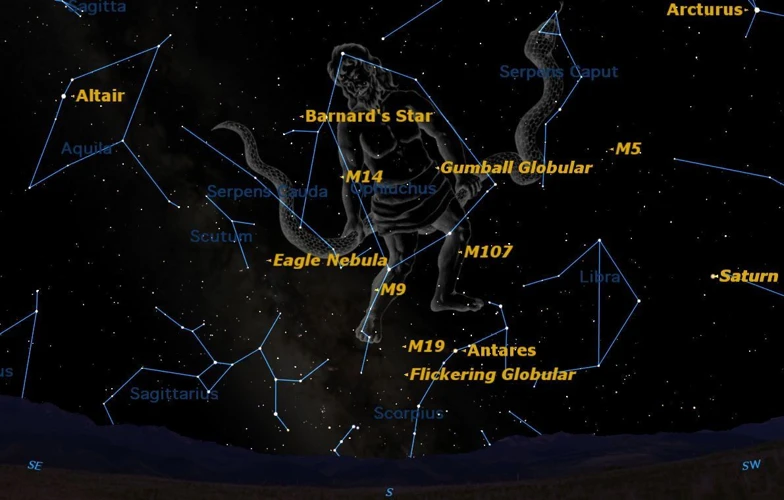
The origin of the Tree of Life can be traced back to various mythologies and ancient civilizations. Let’s delve into three prominent examples:
1. Ancient Mesopotamia: In Mesopotamian mythology, the Tree of Life was known as the “Eridu Tree” and was believed to have stood at the center of the world. It was associated with the god Enki, who was considered the guardian of knowledge and creation. The tree was seen as a source of physical and spiritual nourishment, bestowing immortality and wisdom upon those who partook of its fruit.
2. Norse Mythology: According to Norse mythology, the Tree of Life, known as Yggdrasil, was a colossal ash tree that connected the nine realms, serving as a cosmic axis. Its roots reached into the underworld, its trunk in the earthly realm, and its branches extended into the heavens. Yggdrasil symbolized the interconnectedness of all things and served as a meeting place for gods and humans.
3. Egyptian Mythology: In ancient Egyptian mythology, the Tree of Life was called the “Ished Tree” or “Persea Tree.” It was associated with the goddess Hathor, who was considered the mother of all gods and the embodiment of nurturing and abundance. The tree was believed to provide nourishment and renewal to the deceased in the afterlife, ensuring eternal life and fertility.
These diverse mythologies highlight the significance of the Tree of Life as a symbol that represents the interconnectedness of the world and the eternal cycle of life and death.
1. Ancient Mesopotamia
In ancient Mesopotamia, the Tree of Life, known as the “Eridu Tree,” held great significance in the mythology of the region. Here are some key aspects of its symbolism:
– Connection to the Divine: The Eridu Tree was believed to be located at the center of the world, linking the heavens, the earth, and the underworld. It served as a conduit between mortal beings and the gods, representing a sacred connection between the physical and spiritual realms.
– Immortality and Wisdom: The tree was associated with the god Enki, who was regarded as the giver of wisdom and knowledge. It was believed that by consuming the fruit of the Eridu Tree, one could gain immortality and access divine wisdom. The fruit represented the elixir of life, bestowing eternal existence and enlightenment upon those who partook of it.
– Symbol of Fertility and Abundance: The Eridu Tree was seen as a symbol of fertility and a provider of sustenance. It was often depicted with branches bearing various types of fruits, representing the abundance of the earth. This imagery emphasized the role of the tree in providing nourishment and ensuring the continuation of life.
The mythology surrounding the Eridu Tree in ancient Mesopotamia highlights the importance of the Tree of Life as a bridge between the mortal and divine realms, offering immortality, wisdom, and sustenance to those who sought its blessings.
2. Norse Mythology
In Norse mythology, the Tree of Life is known as Yggdrasil, a colossal ash tree that holds immense significance. Here are some key aspects of Yggdrasil in Norse mythology:
– Cosmic Axis: Yggdrasil is seen as the axis mundi, the center of the world, which connects the nine realms of Norse cosmology. It stands at the intersection of realms such as Asgard (the realm of gods), Midgard (the realm of humans), and Niflheim (the realm of the dead). This placement emphasizes the interconnectedness of all things in the Norse universe.
– Three Roots: Yggdrasil is nourished by three massive roots. One root extends to Asgard, another to Jotunheim (the land of giants), and the third to Niflheim. These roots symbolize the connection between gods, giants, and the underworld, reflecting the harmony and balance between different realms in Norse mythology.
– The Norns: The Norns, a group of three female beings who control fate, reside near the roots of Yggdrasil. They are responsible for weaving the intricate tapestry of destiny and ensuring the order and balance of the cosmos. Their presence near the Tree of Life highlights its connection to fate and destiny.
– Creatures and Deities: Yggdrasil is inhabited by various creatures, including a dragon, an eagle, and a squirrel. These creatures interact with the tree and represent different aspects of the Norse mythological world. Additionally, gods such as Odin, Thor, and Freya frequently seek wisdom and guidance from Yggdrasil.
The myth of Yggdrasil in Norse mythology demonstrates the tree’s significance as a powerful symbol of interconnection, balance, and divine wisdom in the Norse cosmology. It serves as a reminder of the intricate web that binds all beings and realms in the Norse mythological universe.
3. Egyptian Mythology
3. Egyptian Mythology: In ancient Egyptian mythology, the Tree of Life was called the “Ished Tree” or “Persea Tree.” This sacred tree was closely associated with the goddess Hathor, often depicted as a cow or a woman with cow’s horns, who was considered the mother of all gods and a symbol of love, fertility, and nurturing. The Ished Tree was believed to provide nourishment and renewal to the deceased in the afterlife, ensuring eternal life and fertility. It was commonly depicted in tomb paintings and funerary texts, emphasizing its importance in Egyptian beliefs about the afterlife. The Persea Tree was believed to bear fruit that possessed magical properties, capable of granting eternal life to those who consumed it. This divine tree was also associated with the goddess Nut, representing the heavens and the cycle of rebirth. The symbolism of the Tree of Life in Egyptian mythology served as a powerful reminder of the eternal nature of life and the cyclical renewal of the universe.
Representation and Symbolic Meanings
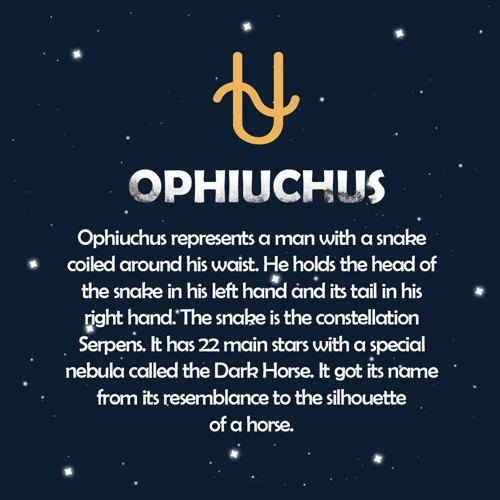
The Tree of Life holds profound symbolic meanings that resonate across cultures and mythologies. Here are three key representations associated with this ancient symbol:
1. Connection to Nature: The Tree of Life is often seen as a representation of the interconnectedness between humans, nature, and the divine. Its roots anchor it to the earth, while its branches reach towards the sky, bridging the realms of heaven and earth. This symbolizes the inherent bond between humanity and the natural world, highlighting the interdependence and harmony that exists in the cosmic order.
2. Life, Death, and Rebirth: The Tree of Life represents the cyclical nature of life, death, and rebirth. Just as trees shed their leaves in the fall and regrow them in the spring, the Tree of Life symbolizes the continuous cycle of creation, preservation, and eventual transformation. It serves as a reminder that life is a perpetual process of renewal and regeneration, flowing seamlessly from one state to another.
3. Enlightenment and Wisdom: The Tree of Life is often associated with wisdom, enlightenment, and spiritual growth. Its branches reach towards the heavens, symbolizing the aspiration for higher knowledge and understanding. In many mythologies, the tree is depicted as bearing fruits or leaves that grant immortality or divine wisdom to those who partake in them. This signifies the quest for spiritual enlightenment and the pursuit of inner wisdom.
The representation and symbolic meanings of the Tree of Life present a rich tapestry of concepts that inspire introspection, connection with nature, and a deep awareness of the cyclical nature of existence.
1. Connection to Nature
The Tree of Life holds a profound connection to nature in various mythologies and cultures. It symbolizes the intricate relationship between humans and the natural world. In many traditions, the tree represents a metaphorical link between the heavens, the earth, and the underworld. As a symbol of fertility and abundance, the tree signifies the nourishment and sustenance that nature provides. Its roots dig deep into the earth, drawing nutrients and stability, while its branches reach towards the sky, embracing the energy and vitality of the cosmos. This connection to nature is exemplified in the Norse myth of Yggdrasil, where the tree serves as a meeting place for gods and humans, fostering a harmonious coexistence. Across cultures, the Tree of Life encourages a deep reverence for the natural world and invites us to recognize our interconnectedness with all living beings. It reminds us to cherish and protect the environment, promoting a sustainable and ecologically conscious approach to life.
2. Life, Death, and Rebirth
Life, death, and rebirth are fundamental concepts closely associated with the symbolism of the Tree of Life. In various mythologies and cultures, the tree represents the cycle of existence and the eternal nature of life itself. Here are some examples that highlight the significance of this theme:
– Norse Mythology: In Norse mythology, the Tree of Life, Yggdrasil, is believed to be constantly undergoing cycles of life, death, and rebirth. It serves as a connection between the realms of the living, the dead, and the gods. It symbolizes the cyclical nature of existence, where life emerges, dies, and ultimately transforms into new life.
– Egyptian Mythology: In ancient Egyptian belief, the Tree of Life was associated with the goddess Isis, who represented rebirth and regeneration. It was believed that upon death, an individual’s soul would embark on a journey to the afterlife, where they would undergo a process of spiritual transformation and rejuvenation, akin to the cycles of nature.
– Celtic Culture: In Celtic mythology, trees held a sacred place in their spiritual beliefs. The Tree of Life, often represented by the ancient oak tree, symbolized the cycle of life and death. This cycle was associated with the turning of the seasons, where the tree sheds its leaves in the autumn, appears “dead” during the winter, and then comes back to life in the spring.
The symbolism of life, death, and rebirth associated with the Tree of Life reflects the continuous cycle of existence, emphasizing the interconnectedness of all living things. It provides a sense of hope and reassurance that through every ending, new beginnings are possible.
3. Enlightenment and Wisdom
The Tree of Life holds a profound symbolic meaning in many cultures, including representing enlightenment and wisdom. This symbolism can be seen in various mythological interpretations:
1. In Norse mythology, the Tree of Life, Yggdrasil, was a source of wisdom and guidance. It was believed that Odin, the chief god, gained his knowledge and understanding of the world by sacrificing himself and hanging from the tree for nine days and nights. This act bestowed upon him the gift of wisdom and the power to see into the future, making him the Allfather who possessed great knowledge and strategic insight.
2. The ancient Celts also associated the Tree of Life, known as Crann Bethadh, with wisdom and spirituality. They believed that the tree represented the connection between the earthly realm, the spiritual realm, and the divine. They sought guidance and illumination from the tree, as they believed it held the key to unlocking hidden knowledge and understanding of the mysteries of the universe.
3. In Chinese mythology, the Tree of Life, known as the “Jiu Xian,” symbolized eternal life and spiritual enlightenment. The tree was often depicted as having flowers and fruits representing immortality and wisdom. It was believed that by partaking in the celestial fruit of the tree, one could gain enlightenment and transcend the mortal realm, entering a state of eternal bliss and wisdom.
Throughout various cultures, the Tree of Life serves as a powerful symbol of knowledge, enlightenment, and wisdom. It represents the quest for understanding and the pursuit of higher consciousness. It urges individuals to seek wisdom and insight, encouraging them to grow and evolve intellectually and spiritually. The Tree of Life symbolizes the eternal journey of expanding one’s knowledge and gaining enlightenment, transcending the limitations of the material world.
Tree of Life in Different Cultures
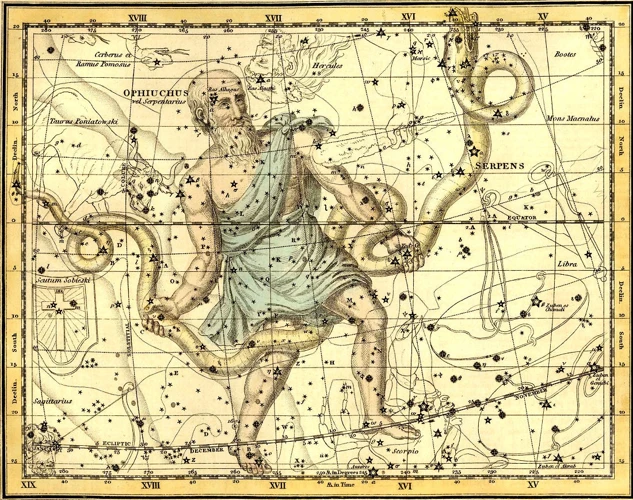
The symbolism of the Tree of Life extends beyond its origin and has been embraced by various cultures throughout history. Here are three notable examples:
1. Celtic Culture: In Celtic mythology, trees held immense significance and the Tree of Life, often depicted as an oak or yew tree, was revered as a sacred symbol. It represented the connection between the upper and lower worlds and acted as a bridge that linked the realms of gods, humans, and spirits. The Celtic Tree of Life symbolized strength, wisdom, and longevity, and its branches were believed to reach for the heavens while its roots delved deep into the earth, embodying the harmony between nature and the divine.
2. Aboriginal Cultures: Indigenous Australian cultures also have their own interpretations of the Tree of Life. For example, the Aboriginal people of Australia believe in the concept of “Dreamtime,” a spiritual realm that encompasses creation, existence, and ancestral spirits. In their mythology, the Tree of Life represents the ancestral connections to the land and serves as a visual representation of the interdependent relationship between humans and the natural world.
3. Chinese Mythology: The Tree of Life, referred to as the “Pan Gu Tree,” holds significance in Chinese mythology. It is associated with the story of Pan Gu, a primordial deity who shaped the world from chaos. The tree is believed to have a crown made of gold and jade, and its branches are said to reach the nine heavens while its roots extend deep into the underworld. The Pan Gu Tree symbolizes growth, prosperity, and the cycle of life and death.
These cultural interpretations highlight the universal appeal of the Tree of Life, transcending geographical boundaries and offering a glimpse into the diverse ways in which cultures have embraced this powerful symbol.
1. Celtic Culture
Celtic culture also holds a rich and significant connection to the Tree of Life. In Celtic mythology, the tree was known as the “Craobh Bheatha” or the “Tree of Life.” It symbolized the cycle of life, death, and rebirth, as well as the interconnectedness of all living beings. The Celts believed that trees were gateways to the spirit world, and the Tree of Life was seen as a powerful conduit between realms. It represented endurance, strength, and wisdom. The Celtic Tree of Life was often depicted with branches reaching towards the heavens and roots delving deep into the earth, symbolizing the connection between the material and spiritual realms. Trees, particularly the oak and the yew, were revered by the Celts and considered sacred. The oak tree was associated with strength and knowledge, while the yew tree symbolized immortality and transformation. The reverence for nature and the belief in the Tree of Life’s profound symbolism is still celebrated in modern Celtic culture, where it serves as a reminder of our deep connection to the natural world and the cycles of life.
2. Aboriginal Cultures
Aboriginal cultures across different regions, such as Australia and North America, also have their own interpretations of the Tree of Life. In Aboriginal mythology, the tree is believed to be a spiritual connection between the earth and the sky, serving as a bridge between the physical and spiritual realms. The tree represents the ancestral beings and their journeys throughout the land, acting as a guide for the community. Its roots delve deep into the earth, symbolizing the connection to the ancestors and the land, while its branches reach towards the heavens, representing the spiritual realm. The Tree of Life in Aboriginal cultures holds profound significance, embodying the essence of existence, spirituality, and the interdependent relationship between all living beings and the natural world. It serves as a reminder of the importance of maintaining a harmonious balance with nature and respecting the ancestral heritage.
3. Chinese Mythology
In Chinese mythology, the Tree of Life is known as the “Pan Gu Tree” and is deeply intertwined with the creation story. According to legend, before the world was formed, there was chaos. Then, from the cosmic egg, Pan Gu emerged. As he grew, his body transformed into various elements: his breath became the wind, his voice turned into thunder, his limbs formed the mountains, and his blood became the rivers. At the center of this creation stood the Pan Gu Tree, which connected heaven and earth. The branches reached toward the heavens, while the roots delved deep into the earth, symbolizing the balance and harmony of the universe. The Pan Gu Tree was believed to contain the knowledge of the cosmos and was considered a source of wisdom and enlightenment. Today, the Tree of Life continues to be revered in traditional Chinese culture and is often depicted in various forms of art and architecture, serving as a reminder of the interconnectedness of all things and the ever-changing cycle of life.
The Tree of Life and Modern Interpretations
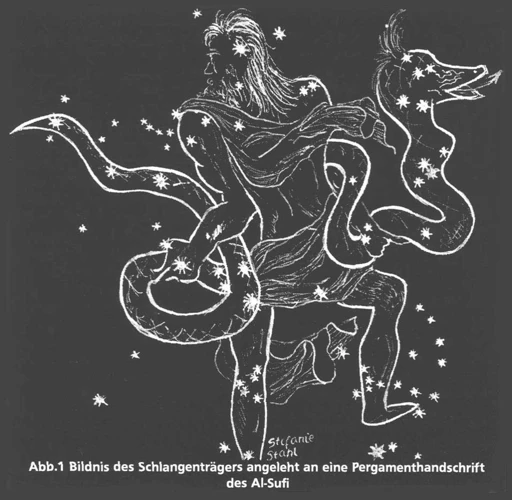
The Tree of Life continues to hold significance in modern times, where it has found interpretation and application in various realms. Let’s explore a few modern interpretations of the Tree of Life:
1. Spiritual and Philosophical Beliefs: The Tree of Life has been embraced by spiritual and philosophical traditions as a representation of spiritual growth, interconnectedness, and higher consciousness. It symbolizes the journey of the individual towards self-realization and enlightenment. The branches reaching upwards signify reaching for higher wisdom and connection to the divine, while the roots symbolize grounding and rootedness in the physical world.
2. Tree of Life Jewelry and Art: The image of the Tree of Life is often incorporated into jewelry and art forms. These representations serve as reminders of the interconnectedness of all beings and the cyclical nature of life. Tree of Life pendants, rings, and other jewelry pieces are adorned by individuals seeking to express their connection to nature, spirituality, and personal growth.
3. Healing and Well-being: The Tree of Life is also associated with healing and well-being practices. It is believed to possess powerful energies that can restore balance and promote physical, emotional, and spiritual healing. Some individuals use tree essences, derived from various parts of the tree, for their therapeutic properties.
The Tree of Life continues to inspire and carry significance in the modern world. Its interpretations span across spiritual beliefs, artistic expressions, and healing practices, making it a symbol that connects humanity to the natural world and the vastness of the universe.
1. Spiritual and Philosophical Beliefs
1. Spiritual and Philosophical Beliefs: The Tree of Life holds immense significance in spiritual and philosophical beliefs, transcending cultural boundaries. In various belief systems, the tree represents a connection between the physical and spiritual realms. For example, in Kabbalah, a mystical tradition of Judaism, the Tree of Life is a diagram that maps out the divine realms and spiritual energies. Each branch and sephira (symbolic sphere) represents a different aspect of the divine and the path to spiritual enlightenment. The Tree of Life is also central to many Indigenous cultures, symbolizing the interconnection of all living beings and serving as a conduit between the physical and spiritual world. Additionally, in philosophical circles, the tree is often seen as a metaphor for personal growth and self-realization. Just as a tree grows and flourishes, individuals strive to nurture their minds, bodies, and souls to reach their fullest potential. The Tree of Life, with its expansive branches and deep roots, serves as a reminder of the interconnectedness of all things and the infinite possibilities for spiritual growth and enlightenment.
2. Tree of Life Jewelry and Art
Tree of Life jewelry and art have become popular forms of expression, allowing individuals to carry the symbolism and energy of the Tree of Life with them. The intricate and captivating designs often feature a tree with branches spreading outward and roots reaching downwards, symbolizing the connection between heaven and earth. Tree of Life pendants, bracelets, and earrings are crafted using various materials such as silver, gold, and gemstones, with each element holding its own significance. The jewelry serves as a reminder of the interconnectedness of all life and can be worn as a personal talisman for strength, wisdom, and spiritual growth. In addition to jewelry, the Tree of Life is also depicted in various art forms, including paintings, sculptures, and tapestries. Artists use their creativity to interpret and manifest the symbolism of the Tree of Life, often incorporating vivid colors and intricate details to evoke a sense of wonder and mystical beauty. These art pieces find their way into homes, galleries, and sacred spaces, adding a touch of spirituality and symbolism to the environment. Whether worn as jewelry or displayed as art, the Tree of Life continues to inspire and captivate individuals with its timeless significance and deep-rooted symbolism.
3. Healing and Well-being
The Tree of Life has found its place in the realm of healing and well-being, serving as a powerful symbol for promoting balance and harmony. Here are three ways in which the Tree of Life connects to healing and well-being:
1. Physical Healing: In various holistic healing practices, the Tree of Life is associated with the concept of vitality and nurturance. Its branches reaching towards the sky represent expansion and growth, while its roots firmly grounded in the earth symbolize stability and grounding. This duality is believed to enhance physical healing processes by facilitating the flow of energy throughout the body.
2. Emotional and Mental Well-being: The Tree of Life’s symbolism extends beyond the physical realm to encompass emotional and mental well-being. As a representation of interconnectedness, it reminds us of our place in the vast web of life, allowing us to find solace and a sense of belonging. Contemplating the Tree of Life can provide a source of inspiration and inner peace, offering a refuge for those seeking emotional and mental balance.
3. Spiritual Connection: Many spiritual traditions view the Tree of Life as a gateway to higher realms of consciousness and enlightenment. Its intertwining branches and roots reflect a harmonious union between the earthly and divine realms. Meditating or visualizing the Tree of Life can help individuals connect with their spiritual selves, fostering a sense of purpose, inner wisdom, and alignment with the universe.
The Tree of Life’s association with healing and well-being demonstrates its enduring relevance in guiding individuals towards holistic health and balance. Whether through physical healing, emotional well-being, or spiritual connection, this ancient symbol continues to inspire and support individuals on their path to wellness.
Conclusion
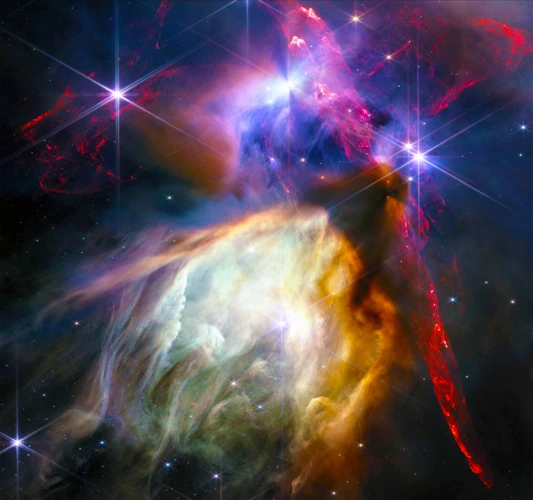
In conclusion, the Tree of Life holds a rich and profound symbolism that transcends time and cultural boundaries. From its origins in ancient Mesopotamia, Norse mythology, and Egyptian mythology, to its representations in Celtic culture, Aboriginal cultures, and Chinese mythology, the Tree of Life has consistently represented the interconnectedness of all life and the cyclical nature of existence. Its symbolic meanings include a connection to nature, the cycle of life, death, and rebirth, as well as enlightenment and wisdom. The Tree of Life continues to find relevance in modern interpretations, whether through spiritual and philosophical beliefs, the creation of symbolic jewelry and artwork, or the incorporation of its healing properties into practices promoting well-being. The enduring allure of the Tree of Life speaks to the universal longing for understanding and connection, reminding us of the profound mysteries and beauty of existence.
Frequently Asked Questions
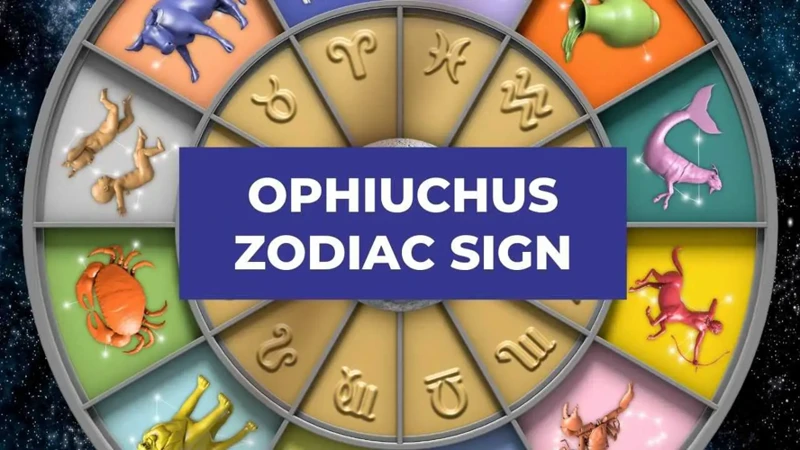
1. What is the significance of the Tree of Life symbol?
The Tree of Life symbol holds various meanings in different mythologies and cultures. It represents the interconnectedness of life, the cycle of birth, growth, death, and rebirth, and the pursuit of wisdom and enlightenment.
2. Is there a specific tree associated with the Tree of Life?
The specific tree associated with the Tree of Life varies across mythologies. In some cultures, it is depicted as an ash tree, while in others, it is represented by a fig tree, a date palm, or even a sacred oak.
3. How does the Tree of Life connect to nature?
The Tree of Life symbolizes the deep connection between humans and the natural world. It represents the idea that all living beings are interconnected and reliant on each other for nourishment, growth, and survival.
4. Can the Tree of Life be found in modern religions?
While the Tree of Life is not explicitly mentioned in modern religious texts, its symbolism and themes can be found woven into various spiritual and philosophical beliefs.
5. What is the significance of the Tree of Life in Celtic culture?
In Celtic culture, the Tree of Life, known as the Crann Bethadh, symbolized the connection between the upper and lower worlds. It represented balance, renewal, and the interconnectedness of all life forms.
6. Are there any health benefits associated with the Tree of Life?
In some contemporary practices, the Tree of Life is associated with healing and well-being. It is believed to bring balance, harmony, and vitality to individuals who connect with its energy.
7. Can the meaning of the Tree of Life change across different cultures?
Absolutely! The meaning and symbolism of the Tree of Life can vary greatly across different cultures and mythologies. It reflects the diverse perspectives and beliefs of each culture, highlighting the universality of its symbol.
8. Is the Tree of Life associated with any specific zodiac signs?
The Tree of Life is not directly associated with any specific zodiac signs. However, its symbolism aligns with the overarching themes of growth, transformation, and interconnectedness found in astrology.
9. How do artists and designers incorporate the Tree of Life into their creations?
The Tree of Life serves as a popular motif in various forms of art and design. It can be found in jewelry, paintings, sculptures, and textiles, symbolizing themes of life, unity, and spiritual growth.
10. Can the Tree of Life be seen as a representation of the circle of life?
Yes, the Tree of Life embodies the concept of the circle of life, representing the continuous cycle of birth, growth, death, and rebirth. It reminds us that all life is interconnected and part of a larger cosmic cycle.
References
- Tree of life | Meaning, Symbol, Biology, Name, & Movie
- Tree of life
- The Tree of Life in Ancient Egypt | Religion and Mythology
Frequently Asked Questions

1. What is the significance of the Tree of Life in mythology?
The Tree of Life holds great symbolic significance in mythology, representing various aspects such as the connection between heaven, earth, and the underworld, the cycle of life, death, and rebirth, and the pursuit of enlightenment and wisdom.
2. How is the Tree of Life depicted in different mythologies?
In various mythologies, the Tree of Life is depicted differently. For instance, in Mesopotamian mythology, it appears as a sacred tree with its roots in the underworld and branches reaching towards the heavens. In Norse mythology, it is represented as Yggdrasil, a massive ash tree. In Egyptian mythology, it takes the form of the Djed pillar.
3. What does the Tree of Life symbolize in connection to nature?
The Tree of Life symbolizes a deep connection to nature, representing the interdependence of all living beings and their reliance on the Earth for sustenance and nurturing. It serves as a reminder of the importance of preserving and respecting the natural world.
4. How does the Tree of Life relate to life, death, and rebirth?
The Tree of Life is closely associated with the cycle of life, death, and rebirth. Its branches represent different stages of life, and its roots delve into the realm of death and the afterlife. It symbolizes the eternal nature of life and the continuous cycle of existence.
5. What does the Tree of Life symbolize in terms of enlightenment and wisdom?
The Tree of Life is often seen as a symbol of knowledge, wisdom, and enlightenment. Its branches reaching upwards symbolize the pursuit of higher understanding, while its deep roots symbolize the grounding and connection to the wisdom of the past.
6. How does Celtic culture interpret the Tree of Life?
In Celtic culture, the Tree of Life, known as Crann Bethadh, represents the connection between the physical and spiritual worlds. It symbolizes strength, wisdom, and rebirth, and is often associated with the concept of ancestry and the interconnectedness of all living beings.
7. What significance does the Tree of Life hold in Aboriginal cultures?
In Aboriginal cultures, the Tree of Life represents the ancestral spirits and their connection to the land. It is seen as a source of nourishment, shelter, and spiritual guidance. It symbolizes the interdependency and harmony between humans, nature, and the spiritual realm.
8. How is the Tree of Life depicted in Chinese mythology?
In Chinese mythology, the Tree of Life is known as the Tree of Immortality or the peach tree. It is believed to bear fruits called peaches of immortality that grant eternal life. It symbolizes longevity, vitality, and spiritual transcendence.
9. What are the modern interpretations of the Tree of Life?
In modern interpretations, the Tree of Life is often associated with spiritual and philosophical beliefs. It is seen as a representation of interconnectedness, personal growth, and the search for meaning and purpose in life. It is also celebrated in the form of jewelry and art, and believed to have healing properties.
10. How is the Tree of Life connected to healing and well-being?
The Tree of Life is believed to possess healing properties in various cultures. It is seen as a symbol of balance, harmony, and renewal. Many people seek its energy and connection to nature to promote physical, emotional, and spiritual well-being.






